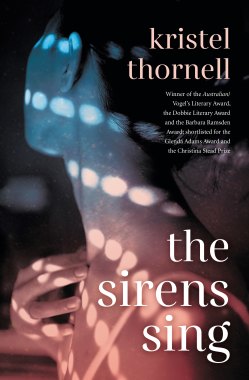As a child I could never make sense of Ulysses having himself tied to the mast of his boat so he doesn’t go to his doom chasing the song of the sirens. Really? I thought this was a very childish thing for a capable man, actually the most capable man in the world, to do. He could have just said “No”. Still, I was curious about at that song. Beautiful enough to kill you. What on earth could do that?
A few years later, it all made sense. Desire. Here’s Sappho nailing it 2500 years ago: “For whenever I look at you even briefly/ I can no longer say a single thing,/ but my tongue is frozen in silence;/ instantly a delicate flame runs beneath my skin;/ with my eyes I see nothing;/ my ears make a whirring noise./ A cold sweat covers me,/ trembling seizes my body,/ and I am greener than grass./ Lacking but little of death do I seem.”
Kristel Thornell writes about desire at a time when it was becoming more complex.Credit:Massimo Municchi
A galaxy of time and space separates the Australian writer Kristel Thornell from Homer and Sappho but if they were onstage at a writers festival they would all talk well about a common subject: desire.
Thornell’s first novel shared the 2010 Vogel prize. The Sirens Sing, her third, is about desire and the unique havoc rather than the joy it wrecks across lives. About that literary festival; the Tolstoy of Anna Karenina should be the fourth on stage. Hereis desire and death disguised as beauty in the magnificent early ball scene: the sensual painting of Anna in low-cut black velvet and lace “wilful tendrils of curls” escaping at the nape of her neck and temples and Vronksy suddenly “there” bowing, Anna losing her balance and Kitty, who is in love with him, catching the atoms of desire flying through air. Between them, not her. Kitty remembers her own shame and agony for the rest of her life. And perhaps, on the stage, the late Josephine Hart’s chilling novel Damage (1991) should also be considered, along with the excellent 1992 film of her book.
The settings for The Sirens Sing are all Australian, all occurring in the second half of last century. These were years when desire was becoming theorised and being seen as something more complex than an atavistic emotion unexplainable in any incisive language. We needed Tolstoy.
Credit:
The Sirens Sing, aiming for diversity within the culturally specific, defies any traditional expectations of a single plot-driven narrative. More “fragments” perhaps, like Sappho. Thornell describes unconnected characters and their reactions to the force of desire in times when it was conveniently, lazily fused with romantic love.
The long opening section concerns two teenagers doing their final years at a high school in the Blue Mountains in 1993-1994. David has seen Heather around the school and is obsessed with her. He can’t define his own feelings and he has never spoken to her. Thornell fastidiously catalogues all the cultural markers of the times, innocent days of Walkmans and headphones, Kylie Minogue, a single mother living well enough in Katoomba.
They were also days when desire was seen more as a male projection. Innocent young women, like Heather, did not know what it was they were feeling. They only knew one word and that was the confining “love”.
David and Heather bring 19-year-old artist Robbie to an end-of-year celebration at the house of a teacher called Ada. She is Italian, married, rich and most significantly a discerning art collector. Robbie is shocked by the beauty and the alluring luxury of Ada’s surroundings where even her gardens are a “plush backdrop” to her life. Ada is older but when she and Robbie meet the atoms fly. It is sexual desire, but it is, too, something greater which is not “love”. Perhaps it is yearning for art?
Robbie and Ada spring to life in ways the other more carefully written characters do not. Thornell searches for a new aspect of desire with each new character and it can seem peremptory. The reader could finish in the middle of the book, or begin at a new date and new chapter depending on what is most absorbing or relevant.
The Siren’s Song is a start to calibrating a hidden local history and might excite further, wider reading about how to be yourself in a world that looks uncongenial. If so, I’d recommend Elif Batuman’s The Idiot and Either/Or.
The Sirens Sing by Kristel Thornell is published by HarperCollins, $32.99.
The Booklist is a weekly newsletter for book lovers from books editor Jason Steger. Get it delivered every Friday.
Most Viewed in Culture
From our partners
Source: Read Full Article


